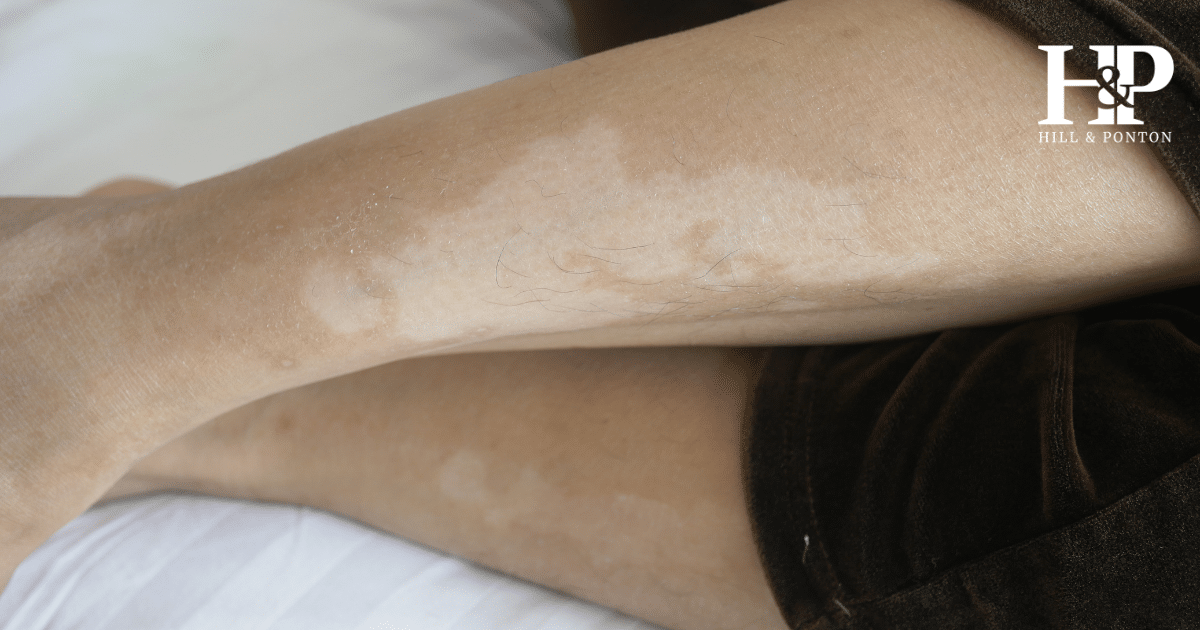VA disability ratings are not always straightforward, leading to veterans getting denied compensation, especially when it is an orthopedic condition such as foot drop. This guide explores the VA disability rates for foot drop and how VA determines them.
It also highlights what to expect and what you should do if your claim is denied due to unclear language in the rating schedule.
What is Foot Drop?
Foot drop is a condition where people have difficulty lifting their front foot. Foot drop can make it hard to walk and cause trips and falls.
The veterans’ feet cannot lift to the angle necessary to walk. This issue is often caused by ankle weakess or a disruption in the nerve pathway between the legs and brain. Foot drop can be a symptom of other serious conditions such as diabetes, traumatic brain injuries, stroke, etc.
As one can imagine, vets with foot drop have a really tough time walking because of all the extra effort and energy needed to walk like they used to be able to. This could lead to other complications like pain in the hips or back. If service-connected, these conditions may receive disability benefits too– more on that below!
Common Symptoms of Foot Drop
- Inability or significant discomfort to wear “regular” shoes
- Either a tingling sensation or a Lack of feeling in the foot/feet. This could be due to damage to the nerves or compression of the nerves.
- Weakened lower leg and foot muscle mass
- Severe balance issues (vertigo)
- More slips and falls
Getting Service Connected Benefits for Foot Drop
VA service connection can be granted for foot drop in a few different ways:
- Direct Service Connection
- Secondary to another condition that has been awarded service-connected
- Service Connection via Aggravation
Direct Service Connection
Direct service connection is when the veteran has a current foot drop, and there is evidence linking foot drop to an in-service event or injury. Typically, the vet must show the following three:
- A current diagnosis of foot drop
- An event or injury that happened while on active duty
- Medical evidence linking the foot drop diagnosis to the event or injury
For example, suppose you can show that you had an ankle injury while in the military and now have been diagnosed with foot drop. In that case, you may be able to qualify for VA benefits.
Secondary to Another Service-Connected Condition
The second way a veteran may be able to get service connection for foot drop is if they have another service-connected condition and it’s causing the foot drop.
For example, if a veteran has a service connection for Diabetes Mellitus and it’s caused nerve damage that resulted in foot drop, then the vet may be able to qualify for VA benefits.
Service Connection via Aggravation
The third way a veteran can get service connection for foot drop is if their current condition has gotten worse due to their military service. This is a service connection via “aggravation.”
For example, suppose you’ve been dealing with foot drop for years before service, and it’s gotten worse since you’ve joined and left the military. In that case, you may be able to get a service connection via aggravation. This could be rare with something like foot drop since we’d usually expect routine examinations before enlistment to catch something that severe.
To qualify, you’ll need to show that your foot drop has gotten worse since leaving the military, and there’s a link between your current condition and your time in service.
C&P Exam for Foot Drop
The examination will generally be carried out by a VA doctor or a physician hired through the Department of Veterans Affairs. The examiner will undoubtedly check for drop foot and inquire about the veteran’s military service. Don’t forget that you must attend the exam! Always communicate with the VA and make sure to review the DBQ (disability benefits questionnaire) for orthopedic issues and see what the VA doctor might ask you.
You also may want to consider bringing someone with you to have another set of eyes that can make a statement on how the examination went, how long it was, the doctor’s approach, etc.
VA Disability Ratings for Foot Drop
VA considers foot drop, for the purposes of rating criteria, a paralysis of the sciatic nerve, or sciatica <– check out our blog on that. That’s Diagnostic Code 8520. That code ranges from 10% to 80%, depending on the severity of the paralysis to the sciatic nerve. We’ll skip a few and get into the 80% rating, which is typically what foot drop should be rated.
40% rating: “moderately severe” paralysis of the sciatic nerve.
60% rating: This is for veterans who have “partial” paralysis of the sciatic nerve. This means that the paralysis is severe, and there is a lot of muscle wastage or atrophy.
80% foot drop rating: this rating is given to veterans who have lost movement in the muscles below their knee. This would apply to veterans whose feet “dangles and drops,” meaning no active movements are possible in those muscles. Flexion of the knee may be severely affected.
Whenever VA has to rate a specific disability by adapting a different condition’s diagnostic code is where it usually tends to get very complicated. We believe vets with foot drop should really be at 80%. Check out our foot drop video below.
TDIU for Foot Drop
Now, suppose a veteran has foot drop that is so severe that it keeps them from being able to maintain substantially gainful employment. In that case, the veteran may be entitled to a 100% VA disability rating through Individual Unemployability (IU).
For example, if a veteran’s foot drop is so bad that they can’t stand for more than a few minutes and can’t walk without severe pain or using an assistive device.
Certain requirements must be met for a veteran to qualify for TDIU benefits.
- The veteran must not be able to maintain substantially gainful employment because of their service-connected disability
- Must have at least one disability rated at least at 60%
- The veteran must have a total combined rating of 70% or more with at least one condition rated at least 40% disabling/
This is essential information to know if you’re a veteran with a foot drop who’s been turned away and cannot work. You may want to reach out to a VA benefits attorney to help appeal your claim.
Have you been denied VA benefits?
Suppose you are a veteran who has been denied disability benefits by the VA because they believe your foot drop is not severe enough. In that case, we hope this blog post has helped clarify how to get the proper VA disability rating for Foot Drop. We would love to hear from veterans in our community and learn more about their experience with disabilities.
However, if you’ve been turned away by VA and they denied you, do not hesitate to press the button below and get a free case evaluation on your active rating decision. If you still haven’t filed, we cannot help just yet. Go to VA Form 21-526EZ instead to start!
Whenever VA has to rate a specific disability by adapting a different condition’s diagnostic code is where it usually tends to get very complicated. We believe vets with foot drop should really be at 80%. Check out our foot drop video below.




